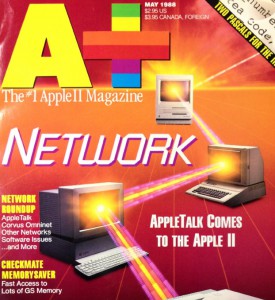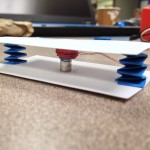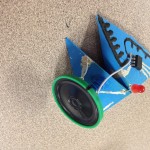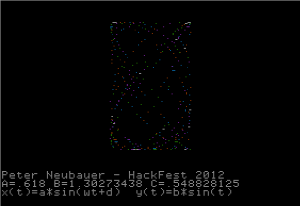The Apple II, first announced in 1977, had in-built color graphics capabilities. Certainly, these capabilities are rudimentary by standards even five years later, but graphics capabilities were a big deal in 1977. Previously, hobbyist accessible computers like the KIM-1 and the Altair 8800 had absolutely no video or graphics output. At best, the owner could open up their wallet again and attach a teletype or terminal. So, the Apple II with a real keyboard and graphics output to a television helped start a new era in personal computers.
Woz designed the Apple II video circuits for low cost using the technology available in 1977. A few short years later, the emerging lineup of contemporary 8-bit computers, like the Commodore 64, TI-99/4A, and ColecoVision, offered graphics capabilities more advanced than the Apple II. The 8-bit Apple II’s graphics capabilities saw only minor updates, including 80 column text mode and double hi-res graphics. It wasn’t until the release of the 16-bit IIgs that the Apple II line got significant video upgrades.
In an attempt to fill the video capability gap of the 8-bit Apple II line, several third parties released graphics boards featuring the popular Texas Instruments TMS9918A video display processor (VDP), a specialized integrated circuit (IC) used in many contemporary machines. Among other features, the VDP supported hardware sprites, a feature that allows small images, such as characters in games, to move over background images with minimal work from the CPU. The TMS9918A-based video boards are often called “sprite boards.” In contrast, similar functions with the Apple II video hardware alone are tedious, slow, processor-intensive, and limit other features possible in the software. Overall, the video boards allowed the Apple II to produce smoother, higher resolution graphics with more colors, all with less effort from the programmer.
Here’s a summary of the “sprite boards” on the market. Please let me know if I’ve missed any.
But, these add-on video boards were never popular. First, there was a “chicken and the egg” problem. The boards required modified software to use their capabilities, so few people wanted to buy the boards without software to make it worthwhile. But, few programmers wanted to write software for the boards because few people owned the boards. Second, the boards were expensive. And, some of the boards required a new monitor, which further added to the cost.
Mr. Maginnis, a respected archivist and Apple II user still active in the community, once wrote:
It’s a shame those boards never gained more than minimal acceptance. Too expensive, I suppose. The graphics (and sound for that matter) of the II series were among the worst in the industry…
Why am I bringing this up? Matthew of Code|Hack|Create recently created a pin-compatible clone of the TMS9918A using an FPGA, called the F18A. The F18A improves upon the TMS9918A is many ways, most notably with VGA output. Can you say “dual-monitor Apple II with accelerated graphics coprocessor and VGA output?” Sure, the primary video output is still the familiar composite output, but there are still interesting possibilities.
Over the coming months, I’ll research and write about how to interface the F18A with an Apple II, both hardware and software. Please contact me if you have any information, documentation, or software related to the Apple II sprite boards.
[UPDATE: Dr. Weyhrich of Apple2History originally referenced a “StarSprite” board. But, further research finds that “StarSprite” is only the software for the SuperSprite. I’ve removed the “StarSprite” from the board list above.]
[UPDATE May 2016: Added alternative links to Archive.org since some of the original links no longer work.]




